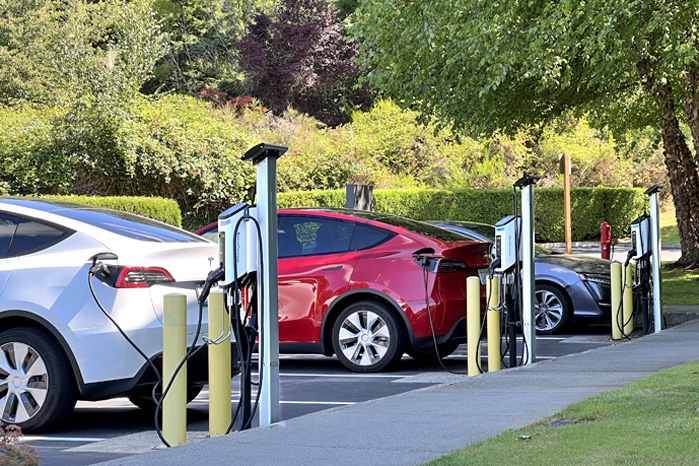To meet its anticipated growth in electric vehicle adoption, Washington state will need sufficient charging and refueling infrastructure to serve the public. This project reviewed the available analytic tools for planning electric vehicle (EV) charging infrastructure and made recommendations on how to meet legislative requirements for forecasting the needs for zero-emission vehicles and mapping recharging equipment.
Washington state currently has over 168,000 registered plug-in electric vehicles and estimates it will need one million more on its roads by 2030 to meet its greenhouse gas emissions goals. In 2020, the Washington Legislature passed HB1287, which directed the Washington State Department of Transportation (WSDOT) to develop and maintain a publicly available forecasting and mapping tool that will provide locations and essential information about charging and refueling infrastructure across Washington state.
For this project, the researchers reviewed 17 existing tools to help states, counties, cities, and tribal governments plan for zero-emission vehicle (ZEV) infrastructure but determined that none could meet Washington legislative requirements alone or in combination. Most of the tools forecasted light-duty electric vehicles and related infrastructure, a few addressed medium- and heavy-duty electric vehicles, and none of them forecasted the infrastructure needs of hydrogen ZEVs or the marine and aviation sectors. Therefore, the researchers made recommendations on how WSDOT could best implement the Zero-Emission Vehicle Mapping and Forecasting Tool (ZEV-MFT) required by the legislature.
After reviewing the available forecasting and mapping tools, the research team developed an approach to producing regular, small-area forecasts of electric vehicle adoption. To produce monthly, census tract-level forecasts, the UW team created a logistic regression model with a dependent variable representing EV market penetration. The dependent variable was the electric vehicle share of either new light-duty vehicle sales (sales share) or the light-duty vehicle stock (stock share).
To address WSDOT’s need to make decisions about the locations and plug configurations of charging stations that will receive grant funds, the researchers evaluated where stations will be needed and how different station configurations will affect charging times and potential wait times for a free plug to start charging. To quantify station-level performance, the team developed a queueing simulation model. Several scenarios were tested to demonstrate the model and estimate station performance under current and future conditions.
The report concludes with opportunities for additional research and development to create practical analytic tools that can assist planners and policymakers in making decisions about EV charging investments.
Report: WA-RD 930.1
Authors:
Steffen Coenen
Zack Aemmer
Daniel Malarkey
Don MacKenzie
UW Civil and Environmental Engineering
Sponsor: WSDOT
WSDOT Technical Monitor: Tonia Buell
WSDOT Project Manager: Doug Brodin

